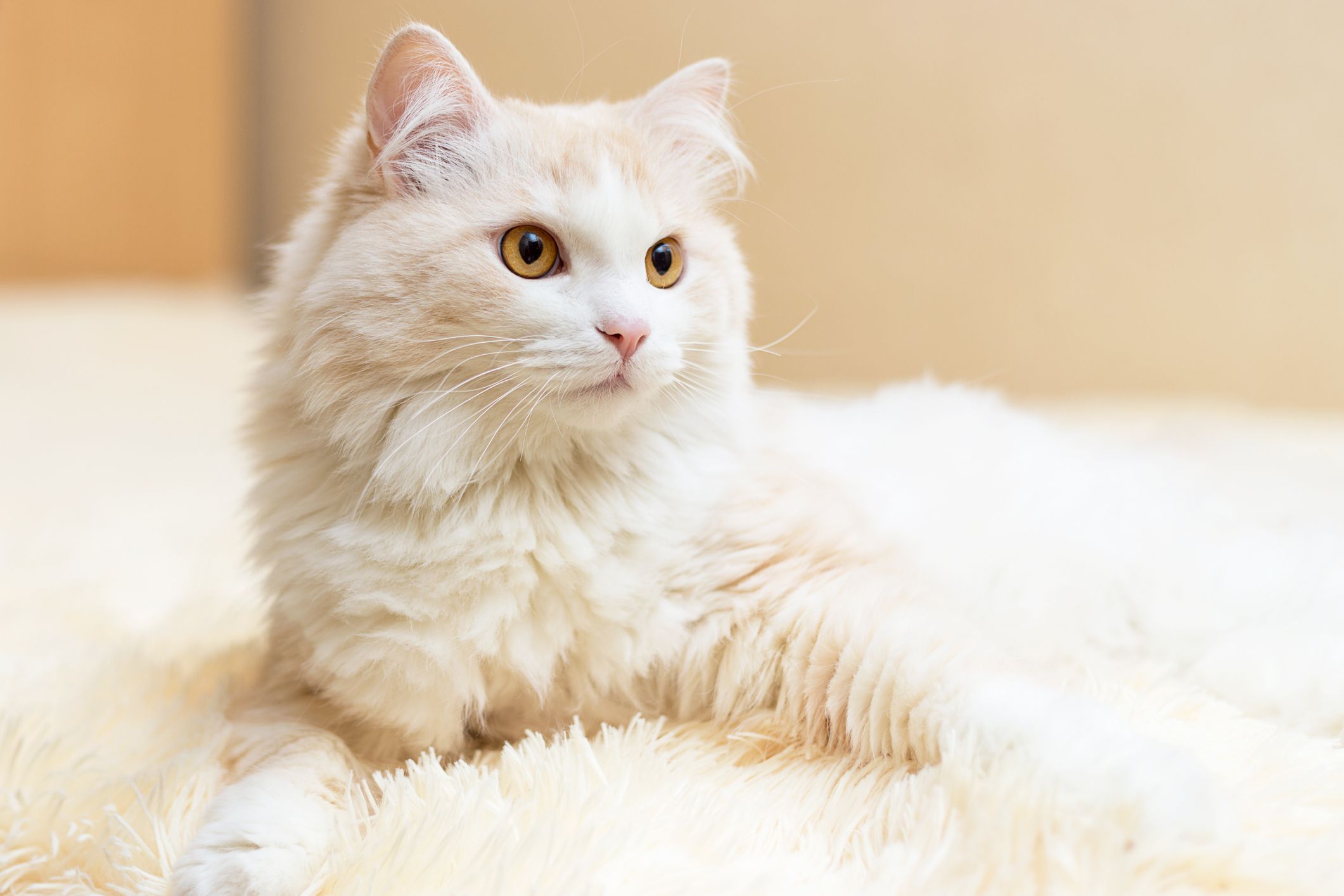
Introduction to the Turkish Angora Cat
Basic Introduction
The Turkish Angora cat is a member of the animal kingdom and the chordate phylum. It is known for its calm, intelligence, and affectionate nature towards humans, showing single-minded devotion to its owner.
The Turkish Angora cat originated in the 16th century and boasts the longest history among long-haired cats. However, with the rise of Persian cats, the Turkish Angora cat gradually fell out of favor. Despite this, the Turkish Angora cat still maintains the habit of sleeping day and night, dozing lazily during the day, and being active and independent in the warm evenings.
Physical Characteristics of the Turkish Angora Cat
External Features
The weight ranges from 2.5 to 5 kilograms, with a long and agile body. It possesses an elegant and detailed semi-long coat.
Head: Small to medium-sized, tapering from top to bottom. Moderately flat skull. Mature males may have a double chin. The muzzle is slightly round and appears long, with no interruption of whiskers. A sturdy and slightly round chin and nose create a vertical line.
Ears: Large, pointed, broad at the base, positioned high, and adorned with tufts of fur on the inside.
Eyes: Large, almond-shaped, slightly upturned at the outer corners. Acceptable in any color harmonizing with the coat.
Neck: Moderately long, slender, and elegant.
Tail: Long but proportionate to the body.
Coat: Of medium length, delicate, and silky to the touch. Sparse undercoat, with longer fur on the neck and hind legs, and a slightly curly coat on the abdomen.
Body: Long and agile, with well-developed muscles. Narrow chest. Hips slightly higher than the shoulders, with delicate bone structure.
Legs and Claws: Long and slender legs, with hind legs longer than the front legs. Small, oval-shaped claws with tufts of fur between the toes.
Personality Traits of the Turkish Angora Cat
Characteristics
The temperament of the Turkish Angora cat is gentle. They enjoy being around people but do not become overly dependent. They are playful and often engage in activities with humans, perhaps due to their affectionate nature and aversion to solitude. The Turkish Angora cat is intelligent, easy to train, and, most importantly, places a high value on personal hygiene. They appreciate freedom and occasionally exhibit a bit of temper.
Caring for Turkish Angora Cats
Care Guidelines
1. Due to the independent nature of Turkish Angora cats, it is advisable not to hold or stroke them for extended periods. This could be detrimental to their physical health.
2. Regular bathing is necessary for Angora cats, as they are exceptionally clean. If they notice any untidiness in their living environment or if their fur becomes dirty and messy, it might significantly impact their emotions.
3. During feeding, it is recommended to engage them in play occasionally. Their overly independent nature makes them less inclined to communicate with their owners. However, prolonged lack of interaction may lead to the Turkish Angora cat exhibiting signs of insecurity.
Pros and Cons of Turkish Angora Cats
Advantages:
Turkish Angora cats are exceptionally clean, often grooming their fur with dedicated licking. While their saliva acts as a potent cleanser, it can cause allergies in humans. Engaging in grooming, they may ingest fur, leading to the occasional regurgitation of hairballs.
Disadvantages:
Turkish Angora cats still retain the carnivorous habit of being more active during the night, engaging in activities such as hunting and mating. Their peak activity occurs at dawn or dusk, with much of the daytime spent lazily resting or sleeping.
